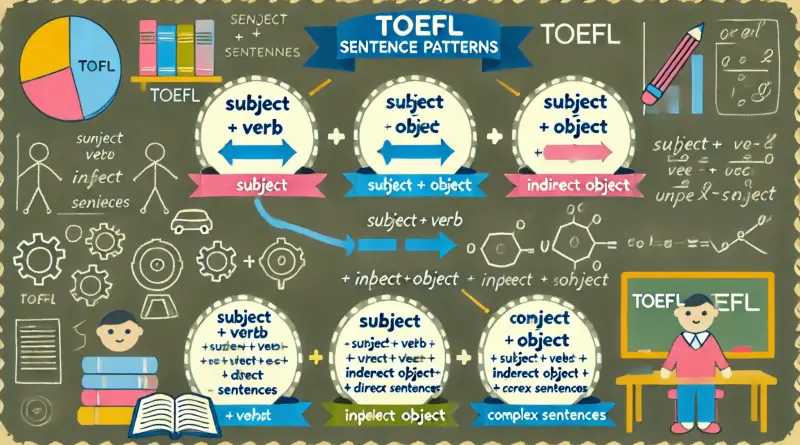|
When preparing for the TOEFL, understanding and mastering various sentence patterns is crucial. These patterns form the backbone of English sentence construction and are essential for effective communication.
Subject + Verb
This is the most basic sentence pattern where the subject performs an action. For example, “He reads.”
Subject + Verb + Object
In this pattern, the subject performs an action on an object. For instance, “She plays the piano.”
Subject + Verb + Indirect Object + Direct Object
This structure involves an action directed at an indirect object and a direct object. For example, “They gave me a gift.”
Subject + Verb + Noun Clause
Here, the subject acts upon a noun clause. For example, “She believes that he is honest.”
Subject + Linking Verb + Subject Complement
This pattern connects the subject with a complement via a linking verb. For example, “He is a doctor.”
Subject + Verb + Adverbial Phrase
In this pattern, an adverbial phrase provides additional information about the action. For instance, “They went to the park yesterday.”
Subject + Verb + Adjective
The adjective modifies the action performed by the subject. For example, “The movie was interesting.”
Subject + Verb + Prepositional Phrase
This pattern includes a prepositional phrase that provides context about the action. For instance, “She ran to the store.”
Complex Sentence Patterns
Compound Sentences
Compound sentences combine two independent clauses using coordinating conjunctions like “and,” “but,” or “or.” For example, “He reads books, and she writes articles.”
Complex Sentences
Complex sentences combine an independent clause with one or more dependent clauses using subordinating conjunctions like “because,” “since,” or “although.” For example, “She plays the piano because she loves music.”
Compound-Complex Sentences
These sentences combine elements of compound and complex sentences, containing at least two independent clauses and one or more dependent clauses. For instance, “She plays the piano because she loves music, and he listens to her play.”
Tips for Mastering Sentence Patterns
- Practice Regularly: Regular practice helps in understanding and using different sentence patterns correctly.
- Read Extensively: Reading various texts exposes you to different sentence structures and patterns.
- Write Frequently: Writing essays and short paragraphs using different sentence patterns enhances your skill.
- Seek Feedback: Getting feedback on your writing helps in identifying areas for improvement.
Conclusion
Mastering these sentence patterns is essential for TOEFL preparation. By understanding and practicing these structures, you can improve your writing and speaking skills, making your communication clearer and more effective.
Further Learning
To explore more about sentence patterns and their usage in TOEFL, check out our detailed guide here.
For additional resources on TOEFL preparation, visit the ETS TOEFL page.
|
